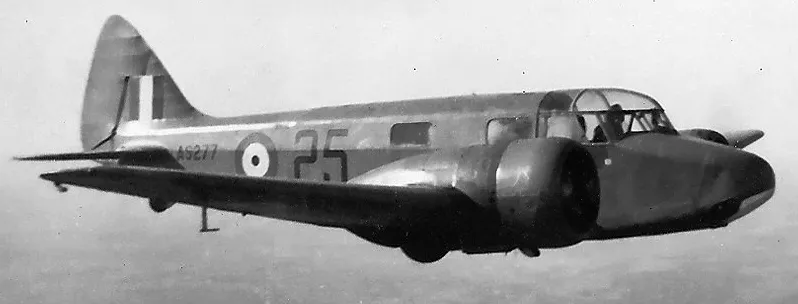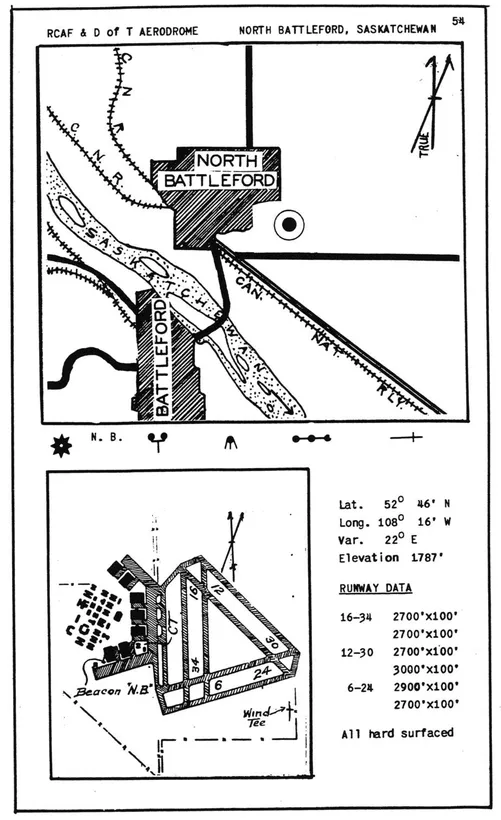Herries, Robert (Flying Officer)
Killed in Flying Accident 1942-December-28


Birth Date: 1918
Born:
Parents: Son of Robert and Mary Herries, of Kilmarnock, Ayrshire, Scotland
Spouse: husband of Jean Orr Herries (nee Graham), of Kilmarnock. B.L. (Glasgow).
Home:
Enlistment:
Enlistment Date: unkown date
Service
RAFVR
Unit
35 SFTS- Service Flying Training School (RAF)
Base
North Battleford, Saskatchewan, Canada
Rank
Flying Officer
Position
Service Numbers
131249
Crew or Other Personnel
Oxford X6686
Oxford serial: X6686

Airspeed A.S. 10 Oxford Mk. II, RCAF (Serial No. AS277), 25, in flight over Saskatchewan, 1942.
The Airspeed AS.10 Oxford was a twin-engine monoplane aircraft developed and manufactured by Airspeed. It saw widespread use for training British Commonwealth aircrews in navigation, radio-operating, bombing and gunnery roles throughout the Second World War.
The Oxford was developed by Airspeed during the 1930s in response to a requirement for a capable trainer aircraft that conformed with Specification T.23/36, which had been issued by the British Air Ministry. Its basic design is derived from the company's earlier AS.6 Envoy, a commercial passenger aircraft. Performing its maiden flight on 19 June 1937, it was quickly put into production as part of a rapid expansion of the Royal Air Force (RAF) in anticipation of a large-scale conflict.
As a consequence of the outbreak of war, many thousands of Oxfords were ordered by Britain and its allies, including Australia, Canada, France, New Zealand, Poland, and the United States. Following the end of the conflict, the Oxford continued to achieve export sales for some time, equipping the newly formed air forces of Egypt, India, Israel, and Yugoslavia. It was considered to be a capable trainer aircraft throughout the conflict, as well as being used a general-purpose type. A large number of Oxfords have been preserved on static display. Wikipedia
Aircraft Images
Oxford X6686
Oxford Mk. I X6686
Taken on strength at the Aircraft Embarkation Detachment at Dartmouth, NS. To storage with No. 4 Training Command on 9 June 1942. Issued from storage on 13 August 1942, for use by No. 35 Service Flying Training School at North Battleford, Saskatchewan. Category A crash on 28 December 1942. Landing downwind at Hamlin relief field, pilot probably affected by glare off snow. Overturned, both RAF instructors on board killed. Scrapped at No. 35 SFTS.1942-03-24 Taken on Strength 2019-08-20
1942-December-28 Accident: 35 Service Flying Training School Loc: R1 Hamlin Names: Firmage | Herries
1943-06-18 Struck off Strength Struck off, reduced to spares and produce 2019-08-20
Unit Desciption
35 SFTS (35 Service Flying Training School)
Graduates of the EFTS "learn-to-fly" program went on a Service Flying Training School (SFTS) for 16 weeks. For the first 8 weeks the trainee was part of an intermediate training squadron; for the next 6 weeks an advanced training squadron and for the final 2 weeks training was conducted at a Bombing & Gunnery School. The Service schools were military establishments run by the RCAF or the RAF.
There were two different types of Service Flying Training Schools. Trainees in the fighter pilot stream went to an SFTS like No. 14 Aylmer, where they trained in the North American Harvard or North American Yale. Trainees in the bomber, coastal or transport pilot stream went to an SFTS like No. 5 Brantford where they learned multi-engine technique in an Airspeed Oxford, Avro Anson or Cessna Crane.

For More Information on RCAF Station North Battleford see here
RCAF.Info - RCAF Station North Battleford SK
RCAF.Info - Relief Landing Field Hamlin SK
RCAF.Info - Relief Landing Field Brada SK
![]() Elinor Florence - Brada Relief Field - Air Force Ghosts
Elinor Florence - Brada Relief Field - Air Force Ghosts
![]() Saskatchewan Virtual War Memorial - Base History
Saskatchewan Virtual War Memorial - Base History
![]() Vintage Wings - Ghosts Of Saskatchewan
Vintage Wings - Ghosts Of Saskatchewan